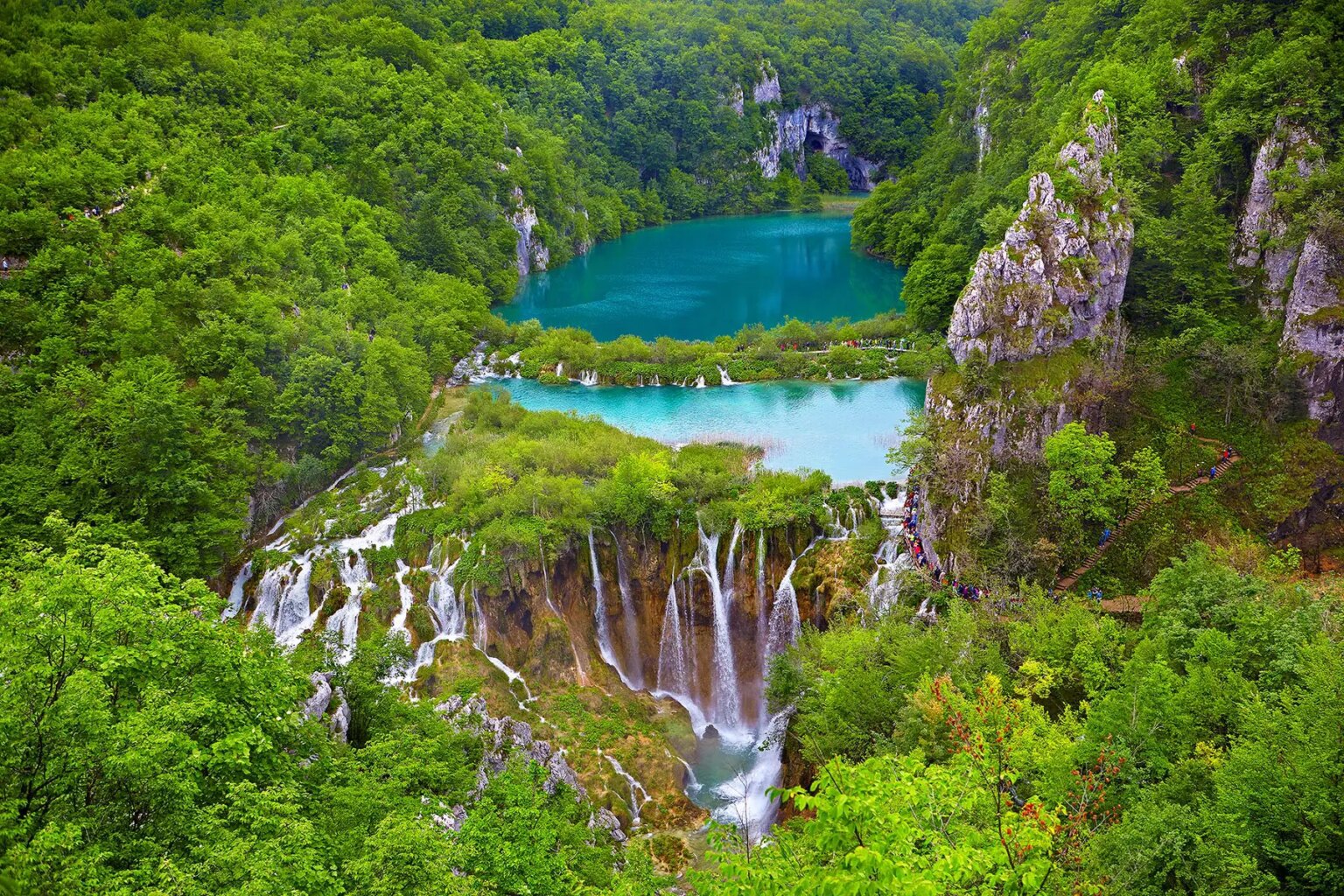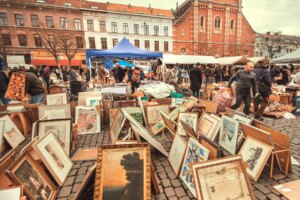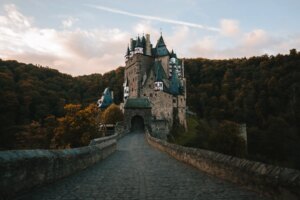Looking for your next European outdoor adventure with a group of friends? Maybe a romantic weekend getaway with your partner for Valentine’s Day? Whether you’re taking the train across Europe or doing a European road trip, these are some of the most beautiful places in Europe.
- Belgium: Hoge Kempen National Park
- Bulgaria: Seven Rila Lakes
- Croatia: Plitvice Lakes
- Czechia: Punkva Caves
- England: The Cotswolds
- France: Verdon Gorge
- Italy: Cinque Terre National Park
- Luxembourg: Mullerthal
- Norway: Geirangerfjord
- Poland: Białowieża Forest
- Switzerland: Swiss Alps
- Ukraine: Synevyr-Polyans’ke Lake
Omio
Want to get away from it all? Let Omio find the right travel options for you. Their easy-to-use website connects you with the best transport options wherever you’re going. Whether you’re flying to the Norwegian fjords or taking a bus to Bulgaria, you’ll find the best deal on Omio.
Belgium: Hoge Kempen National Park
Whether you’re talking about people or railway tracks, Belgium is a densely-packed country known for its wealth of attractions. Tourists flock year-round to Belgium’s French-speaking south to visit the thick forests of the Ardennes. But Belgium’s most beautiful region is arguably located further to the north amongst the Dutch-speakers: Hoge Kempen National Park. One of only two national parks in Belgium, Hoge Kempen first opened to the public in 2006 as a way to protect the biodiversity of the Kempens Plateau (Hoge Kempen in Dutch).
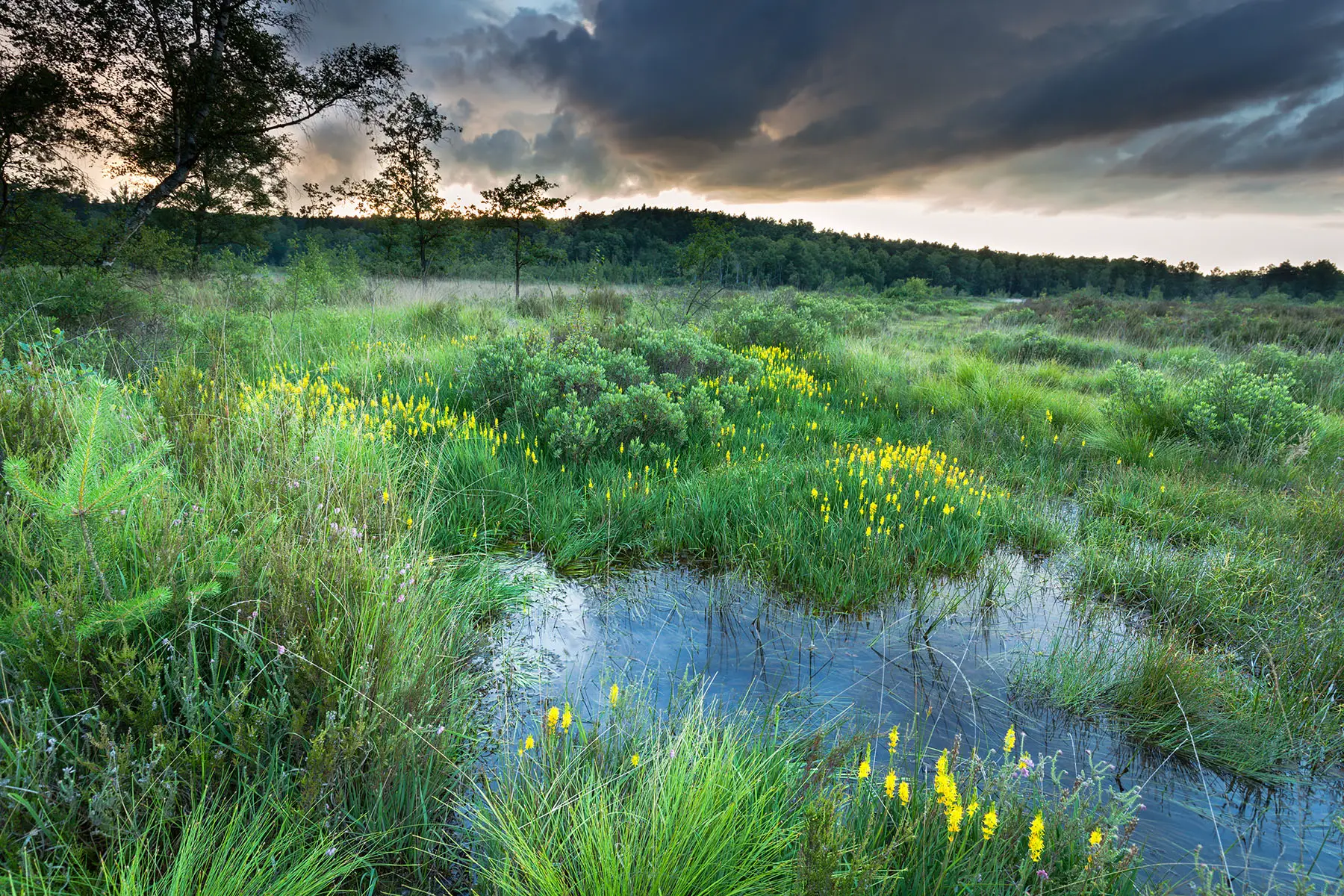
Six municipalities in and around the park have their own themed entrances to the park, ranging from insects, industrial heritage, and even the cosmos. Once inside the park, visitors to Hoge Kempen will find hundreds of kilometers of cycling paths and hiking trails. The paths are well-signed and also have distance markers for trail runners.
Bulgaria: Seven Rila Lakes
South of the capital city of Sofia lie the Rila Mountains, Bulgaria’s eminent mountain range. There are about 200 glacial lakes across the Rila Mountains, 120 of which are in the national park. Of all these lakes, though, one cluster of seven lakes are particularly stunning. The easiest launching point for any journey to the Seven Rila Lakes is the town of Sapareva Banya (Сапарева Баня in Bulgarian), which is close to a chairlift that leads visitors to the lakes themselves.
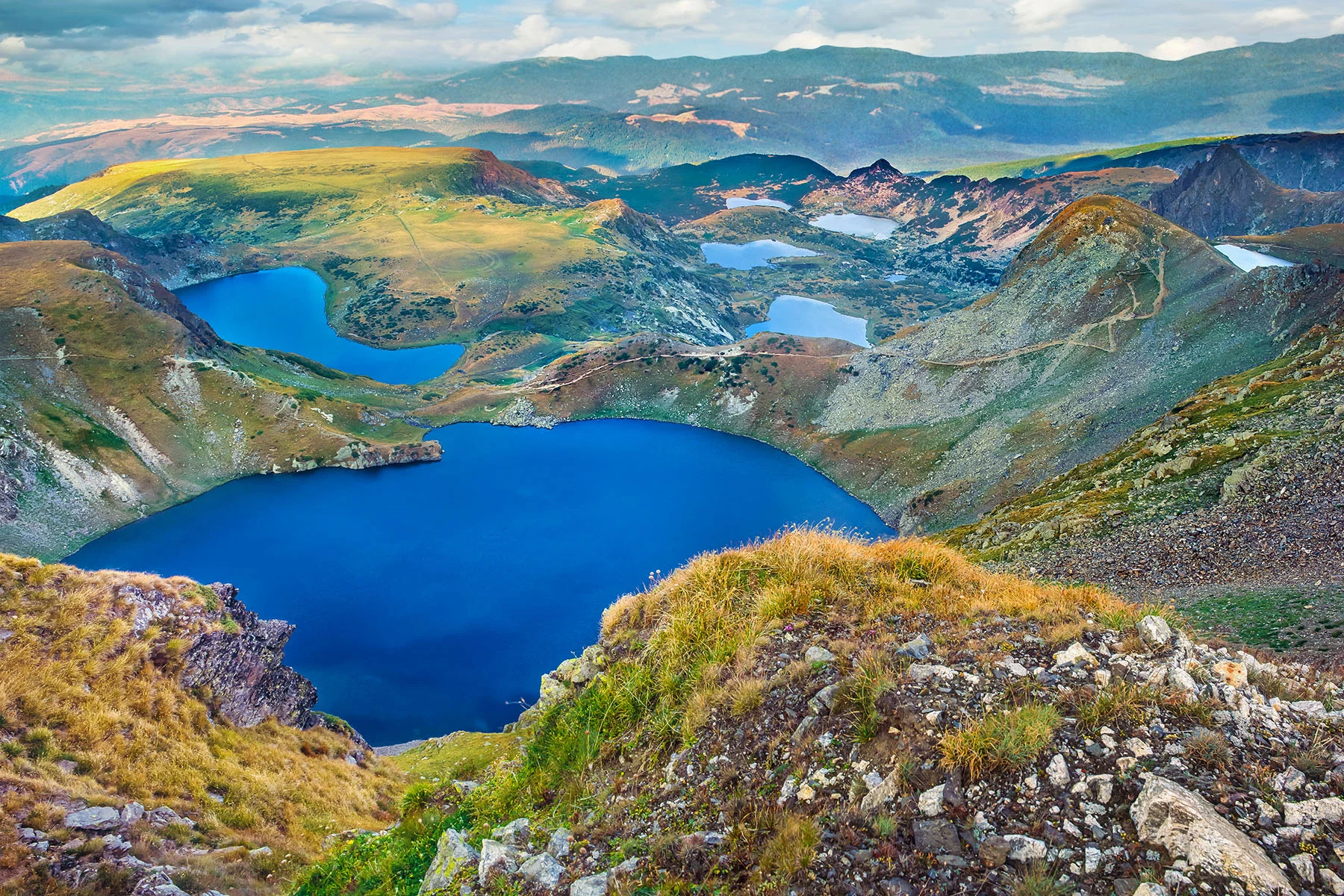
Travelers looking for a bit more of an adventure at one of the most beautiful places in Europe can hike the entire way up. Hiking around the Seven Rila Lakes takes about five hours if you’re reasonably fit. After a long day’s hike, tuck into a refreshing pint of beer in one of the cosy guesthouses and stay the night in the shadow of the highest mountains in the Balkans.
Croatia: Plitvice Lakes
As a country, Croatia is full of stunning vistas from north to south. But one place in particular deserves a special mention: Plitvice Lakes. Home to Croatia’s main artery connecting the inland capital city with the Adriatic Sea, a lengthy chain of cascading lakes punctuates the Plitvice Lakes National Park. The park itself serves as a buffer between Croatia’s warm coastal climate and the cooler, more elevated plateau.

Protected as a national park since 1949, the Plitvice Lakes are one of the most well-visited (and best-protected) tourist destinations in Croatia, hosting over a million visitors each year. An entry permit for the park costs HRK 250 and guided tours of the lakes come at an additional cost. Depending on the season, more intrepid visitors can explore the Plitvice’s hiking trails, cycling paths, ski runs, and sleigh hills.
Czechia: Punkva Caves
A karst is a series of underground landforms punctuated by cave networks and sinkholes, many of which lie in central Europe. The Moravian Karst, north of the Czech city of Brno, is home to a number of caves, a handful of which are publicly accessible. Of all the caves in Moravia, the Punkva Caves are the most well-known to tourists.
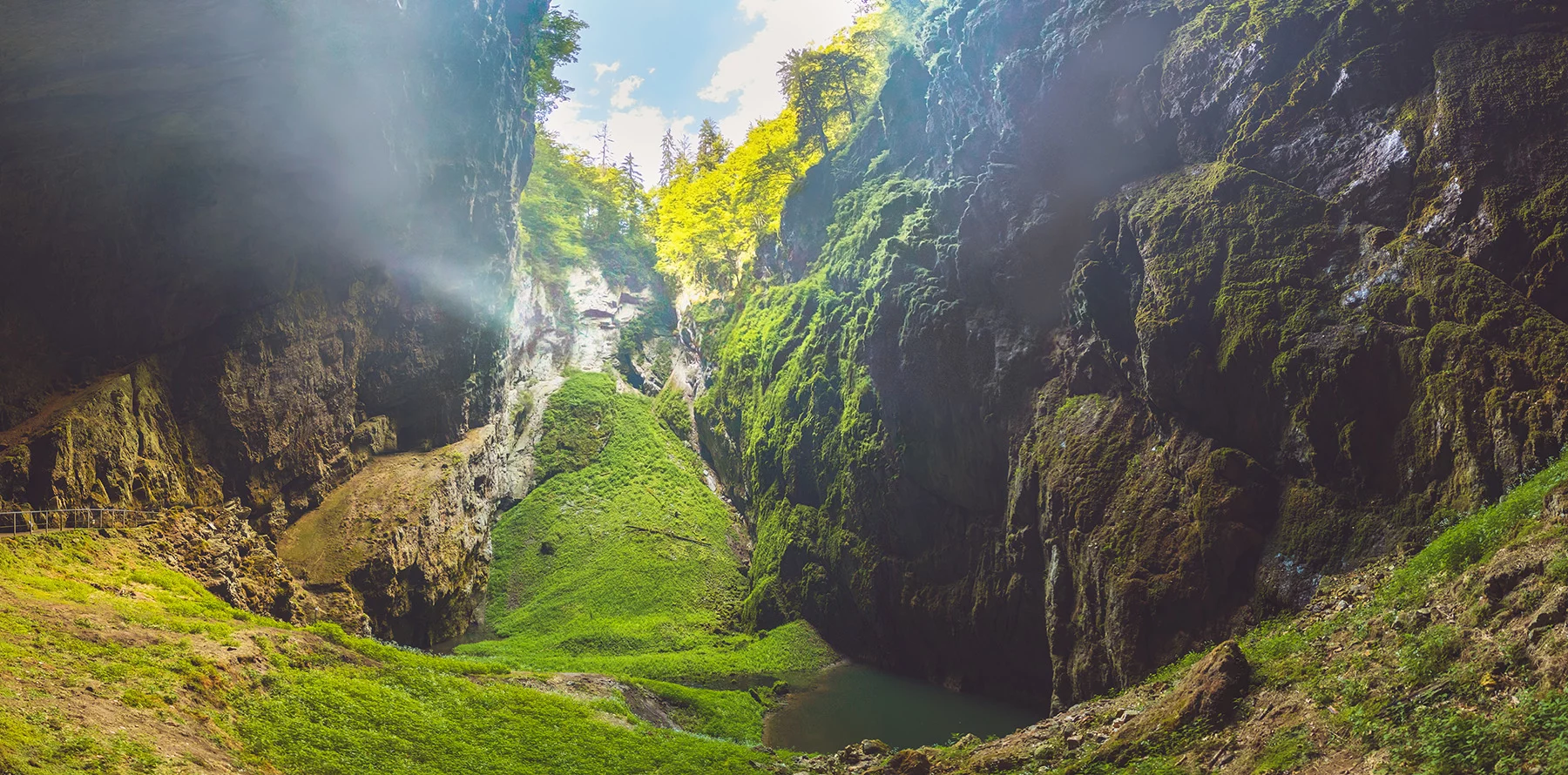
Guided tours through the Punkva Caves involve a mixture of walking and travel by boat. Although many of the guides only speak Czech, the dramatic formations of the caves will wow you regardless of your native language. Wear sturdy footwear, though, as the rock formations inside of the caves can be quite slippery. The highlight of the Punkva Caves is undoubtedly the Macocha Abyss, where the network of caves meets the open air in a breathtaking fashion.
England: The Cotswolds
Full of rolling hills and ancient stone villages, visiting the Cotswolds is like stepping back in time. The region is home to countless walking trails, a rich artistic history (this was the birthplace of the Arts and Crafts Movement, after all), and quaint gardens. Visitors bask in the quiet and reserved nature of the area, the perfect antidote to hectic places like London. Hire a car (or bring your road bike) and wind through the narrow roads from village to village.
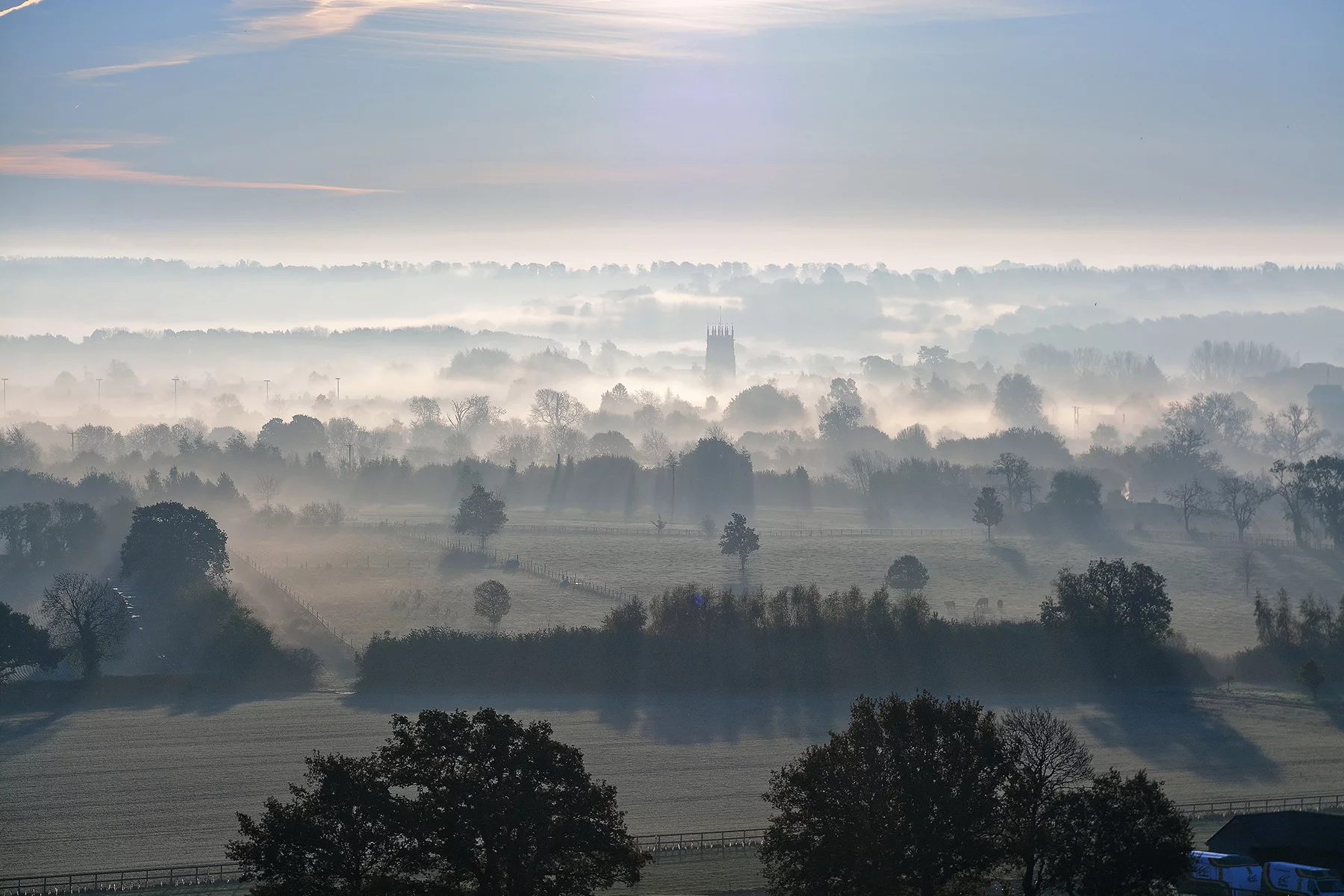
One of the best ways to explore the region is by hiking through the countryside. Visit the charming hill town of Stow-on-the-World, the pristine villages of Lower and Upper Slaughter, or the real Venice of the Cotswolds: Bourton-on-the-Water. Along the way, you’ll catch backyard glimpses of farmers tending to their fields, ducks swimming butt-up in mill ponds, rabbits popping up in fields, and ancient wind-sculpted trees. Slender slate church spires mark the distant villages where a hot cup of tea is waiting.
France: Verdon Gorge
One of the world’s great canyons, the Verdon Gorge is truly dramatic. The landscape is awash with overpowering slabs of white- and salmon-colored limestone plunging nearly impossible distances to the snaking Verdon River far below. Verdon Gorge is best seen by driving along the left bank, where narrow roads are full of switchbacks and almost precarious cliffs. Feeling adventurous and have a bit more time on your hands? You can also hike down into the canyon.
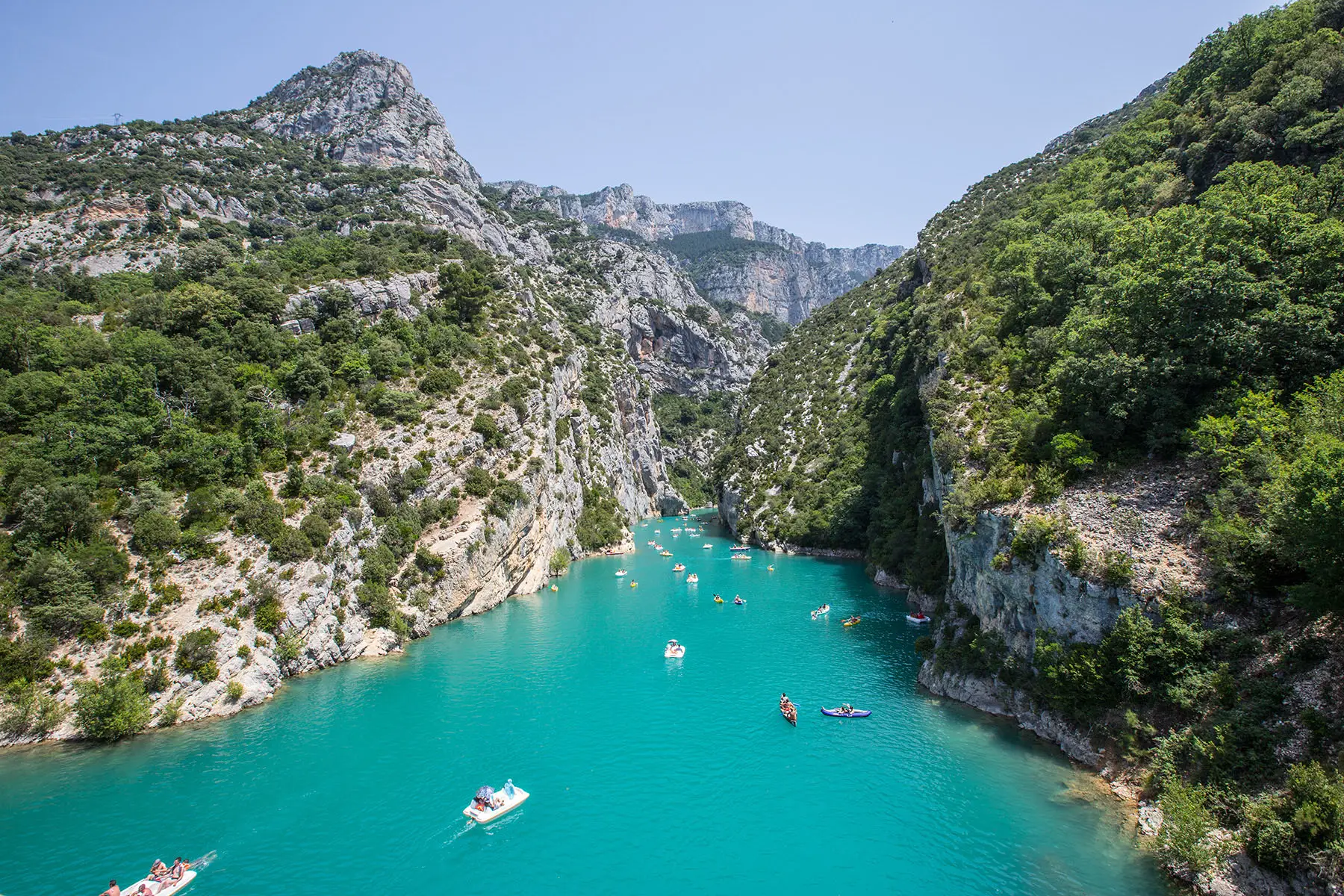
Adventure seekers and water enthusiasts alike will adore the Verdon Gorge. The bright turquoise water that flows through the canyon is ideal for all kinds of water-based activities, including kayaking, rafting, canoeing, and hydrospeed. After you’ve toweled off and stepped onto dry land, put on your hiking boots and trek through the hills or sail high up in the air while paragliding.
After all of that physical activity, you’ll some hearty meals to recharge. Thankfully, Provençal cuisine is one of the most celebrated culinary traditions on the planet. Tuck into a healthy serving of ratatouille or dip some bread into some garlic-heavy aïoli. Wash it all down with local wine, a Provençal specialty that’s been produced and happily consumed since well before Christianity’s creation.
Italy: Cinque Terre National Park
Linking five of the most picturesque villages you’ll ever see, Cinque Terre became Italy’s first national park in 1999. This coastal area of Liguria is inaccessible to vehicles and is full of stunning hiking trails (there are 48 to choose from) and boat rides to help you take in the dramatic landscape in these coastal villages. After you’ve enjoyed Cinque Terre’s incredible scenery, tuck into a hearty serving of trofie (the local pasta shape) with its natural partner: freshly-prepared pesto.
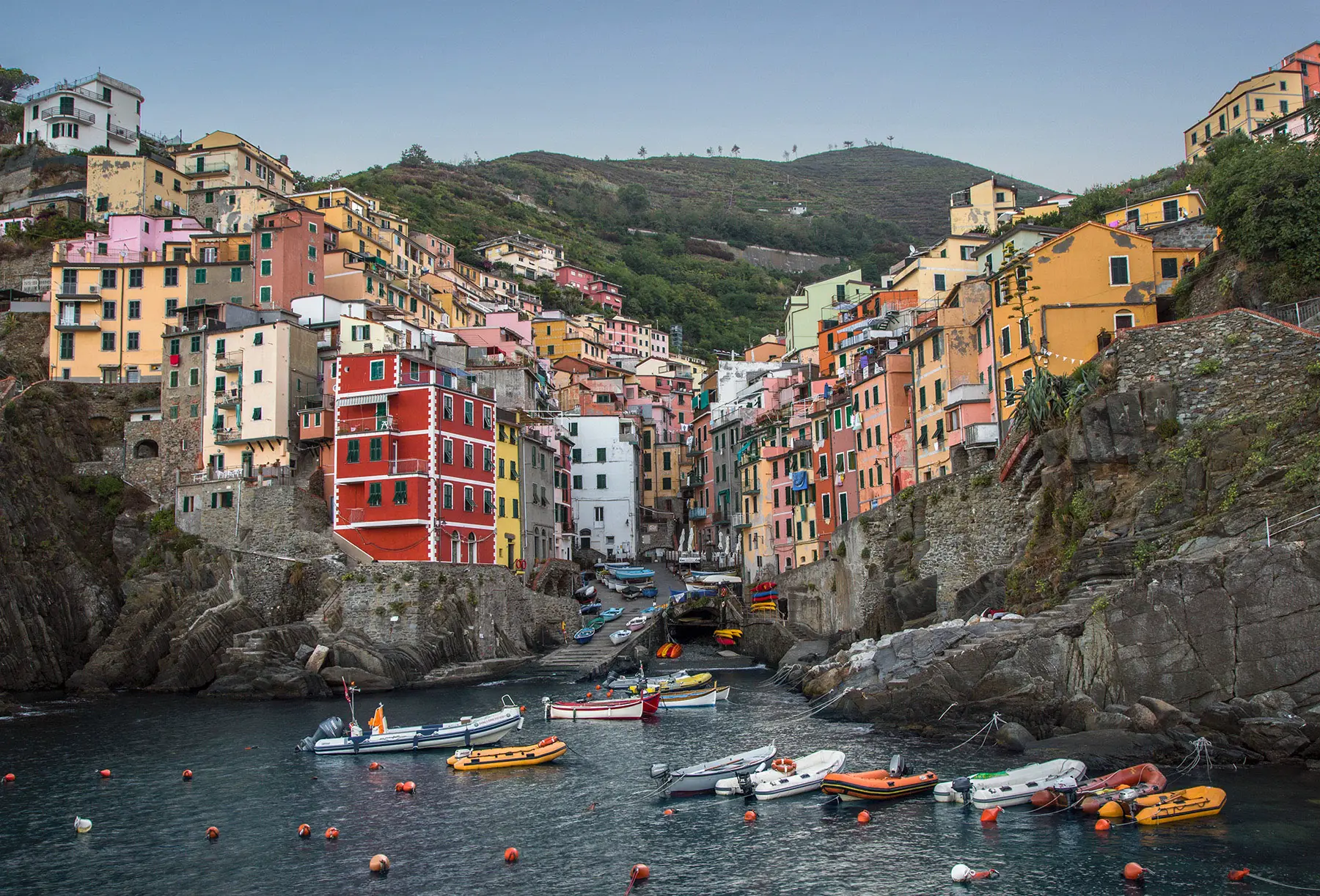
The five villages each have their own distinct charms to them. Some are best known for their top-notch beaches, while others boast the best restaurants. The great equalizer of these villages is you’ll probably take the train (or hike) to get to them. Cinque Terre National Park is also a UNESCO World Heritage Site, which will lead to local infrastructural improvements. But for now, it’s still one of the most beautiful places in Europe with its fresh seafood, charming villages, and winding trails. Your spirits will lift as you hike among the vineyards and enjoy the views of Vernazza’s castle.
Luxembourg: Mullerthal
When most travelers think of Luxembourg, they think of the typical Low Country geography: flat and close to the water. Most of Luxembourg delivers on that stereotype, but one area bucks the trend. Nicknamed Little Switzerland, Mullerthal (Mëllerdall in Luxembourgish or Müllertal in German) is full of jagged terrain and dense forests that make it look more like the Swiss countryside than a region of Europe known for its flatness.

Mullerthal’s terrain makes for spectacular hiking trails that wind up and down a number of hills. The 112-kilometer hiking trail is actually three circular sections that surround a few nearby towns; the trails make it easy to just give one of the sectors a go. Working through the changes in elevation on your hike will make a delicious plate of Gromperekichelchen (Luxembourgish potato pancakes) or Judd mat Gaardebounen (the national dish, comprised of smoked pork collar and beans) go down easily.
Norway: Geirangerfjord
When anyone thinks of Norway’s stunning nature, a number of things come to mind: bears, snow, the northern lights, and glaciers are all a part of what this Nordic nation has to offer. But of all the things in Norway’s natural arsenal, its fjords are the best known. Fjord is actually a Norwegian word that denotes a narrow inlet of water with steep mountains on either side, making for a dramatic landscape. Norway’s most well-trodden fjord is the Geirangerfjord, which is especially narrow and thus all the more striking.

The Geirangerfjord gets somewhat overwhelmed by ferries docking in Geiranger, the village at the tip of the fjord. Geiranger is also accessible from the nearby city of Ålesund, 100 kilometers to the northwest. Hiking up the nearby mountains provides spectacular views from above. Kayaking through the Geirangerfjord itself is a great way to experience the grand surroundings.
Poland: Białowieża Forest
Famously known as Europe’s last old-growth forest, the Białowieża Forest occupies a small corner of eastern Poland. The forest straddles Poland’s border with Belarus, where the park’s name is Белавежская пушча (Biełaviežskaja Pušča in Belarusian). Although Belarus is notoriously hard to get a tourist visa for, visa-free entry is allowed for hikers and cyclists who wish to explore the Belarusian side of the forest.
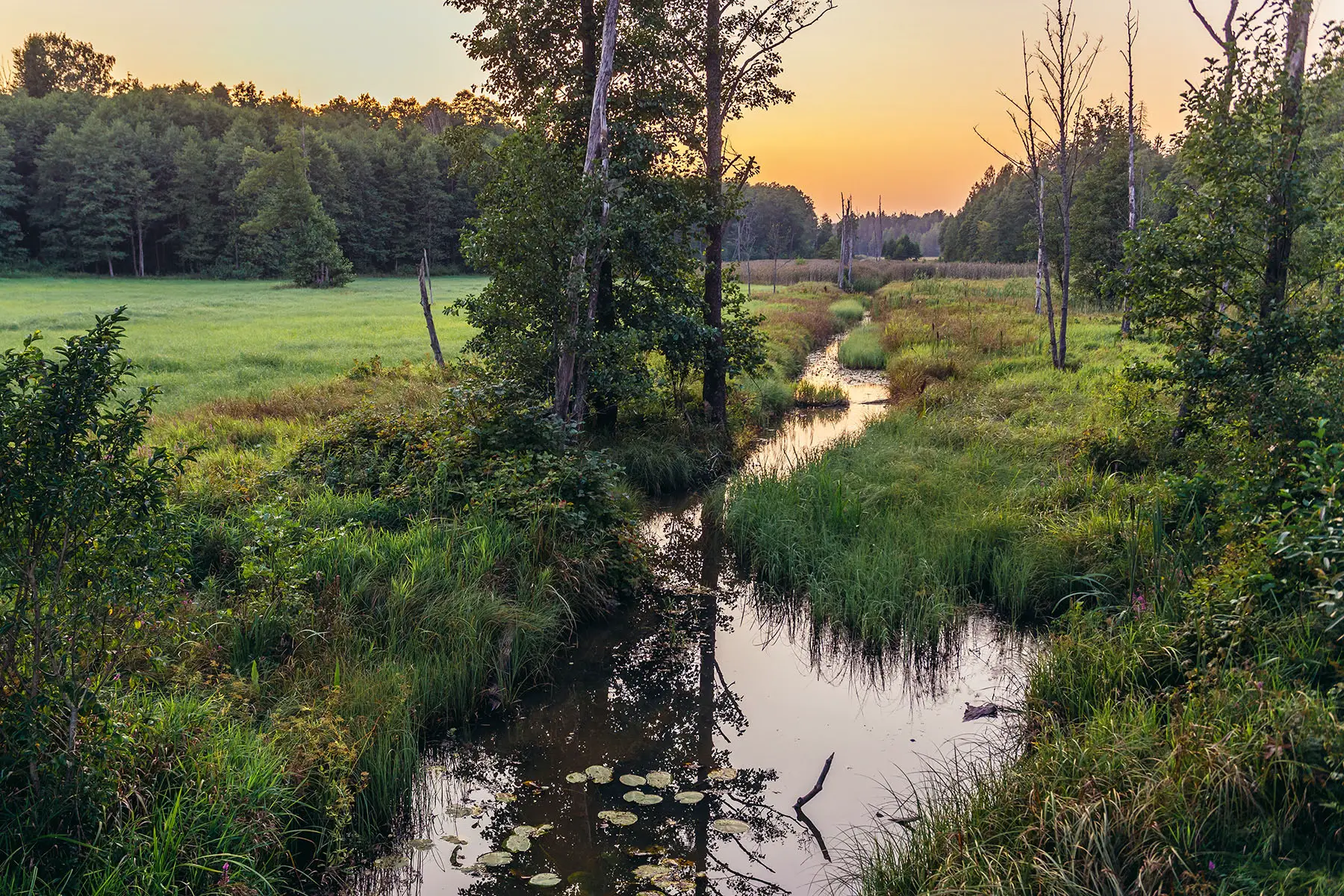
Polish and Belarusian authorities take preservation seriously in the park; parts of the nature reserves within Białowieża Forest are only accessible on six-hour hikes with a guide. Owing to its remarkable level of biodiversity, a visit to this primeval treasure will surely result in stunning wildlife sightings. Thousands of creatures and ancient oak trees call Białowieża home: pygmy owls, koniks, and Eurasian elks are just a few of the animals found here.
No visit to Białowieża Forest is complete without sighting the undeniable king of the forest: the European bison. In the early 20th century, this region was completely devoid of bison. But after a long process of reintroducing bison into the forest, some 800 bison now roam through Białowieża today. The bison’s importance in the region is so entrenched that one of Poland’s most well-known vodkas (Żubrówka) is infused with bison grass blades sourced directly from the forest itself.
Switzerland: Swiss Alps
Perhaps one of Europe’s greatest natural wonders is the Alps. Stretching across eight different countries, there are two countries in particular where this majestic mountain range truly contributes to the national identity: Austria and Switzerland. It’s Switzerland’s Bernese Highlands, though, that’s the real star of the show.
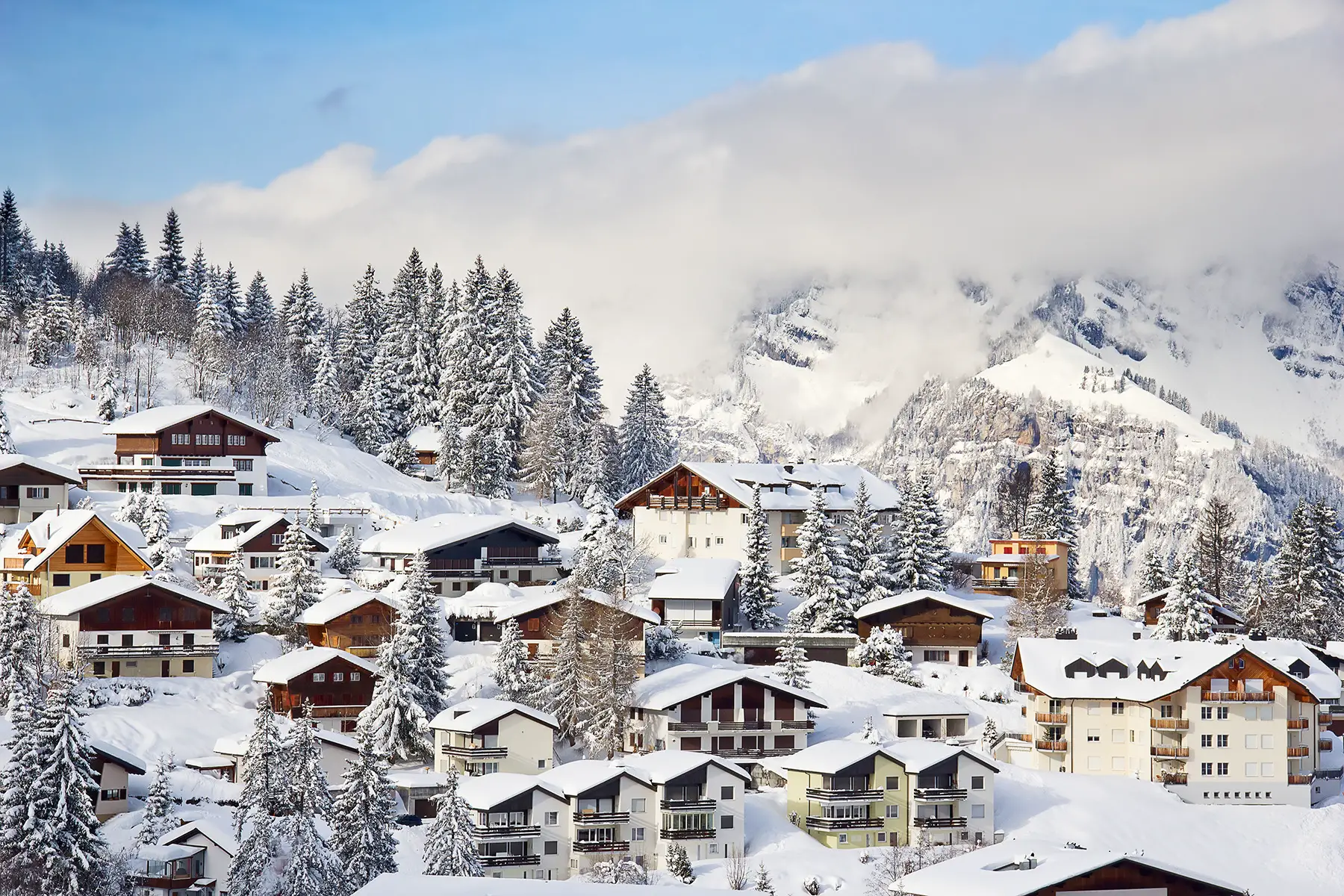
The southern end of the Canton of Bern is home to some of the most spectacular peaks on the planet. Take the train up to Jungfraujoch, the highest train station in Europe (3,454 meters above sea level); multiple viewpoints of Switzerland’s greatest peaks are strolling distance from the platform. The Canton of Bern is full of scenic towns at just about any elevation. But the Bernese Highlands in particular have a wealth of choices like Gimmelwald, Interlaken, and Kandersteg. After a full day of skiing, warm up from that crisp mountain air in the evening by tucking into a hearty serving of Rösti. Don’t forget a gut-warming glass of Ingwerer after!
Ukraine: Synevyr-Polyans’ke Lake
This lake is part of the stunning Synevyr National Park in Ukraine’s southwest. The Ukrainian government agrees that this 10,000-year-old lake is one of the most beautiful places in Europe; Synevyr-Polyans’ke Lake is actually one of the Seven Natural Wonders of Ukraine. A pair of wooden sculptures on Synevyr-Polyans’ke’s shores symbolize a local legend; according to the legend, a count’s daughter cried enough tears to create the lake after her father killed her forbidden lover. This tranquil lake is easy to get to from across eastern Europe; Synevyr lies within the Zakarpattia Oblast, which borders Hungary, Poland, Romania, and Slovakia.

The best way to explore this tranquil lake is by navigating it on ancient wooden rafts. As the lake is part of a natural reserve, visitors cannot fish or swim in the lake. There are, however, multiple campsites in the vicinity. Elsewhere within Synevyr, visitors will find a brown bear sanctuary, a chair lift at Mount Gemba, and the Shypit Waterfall.
